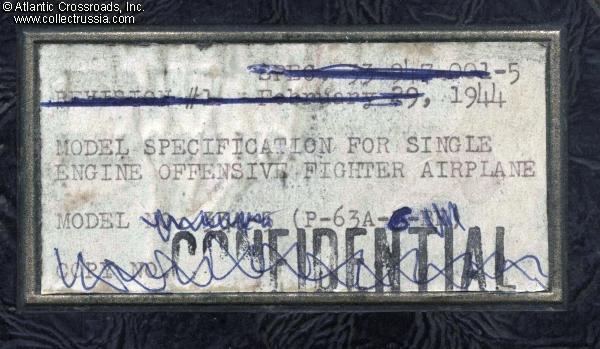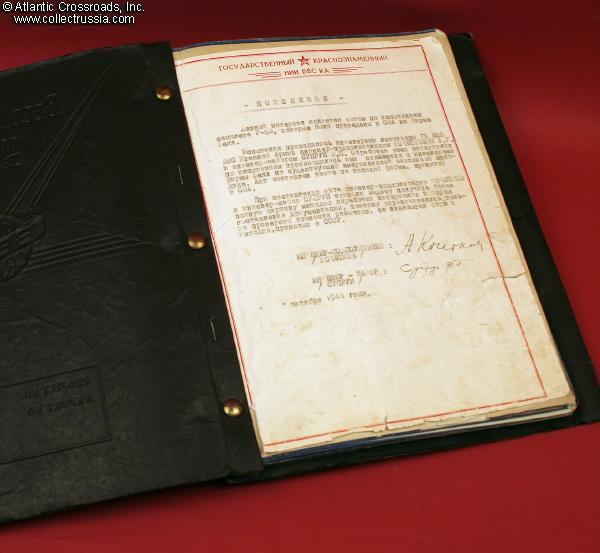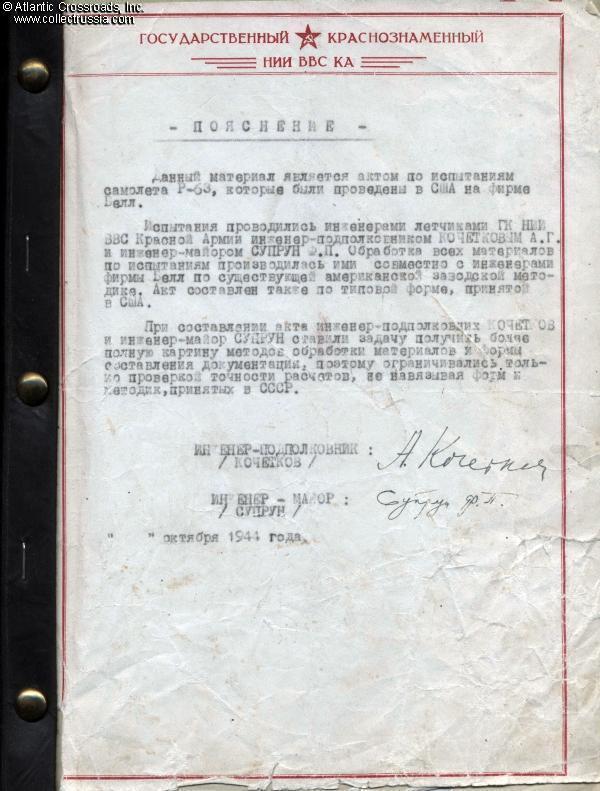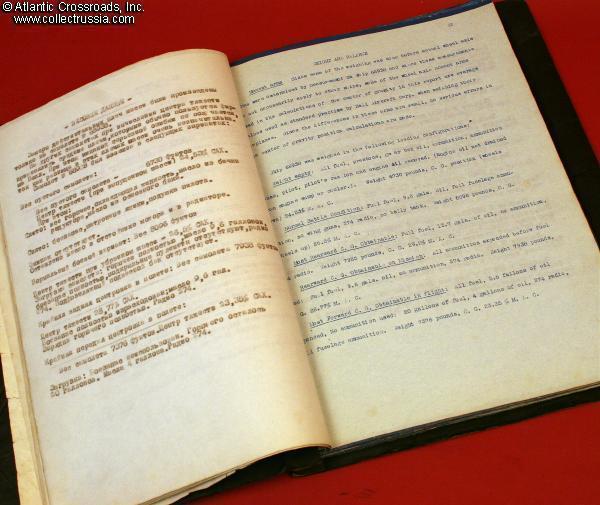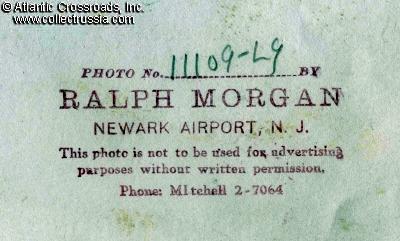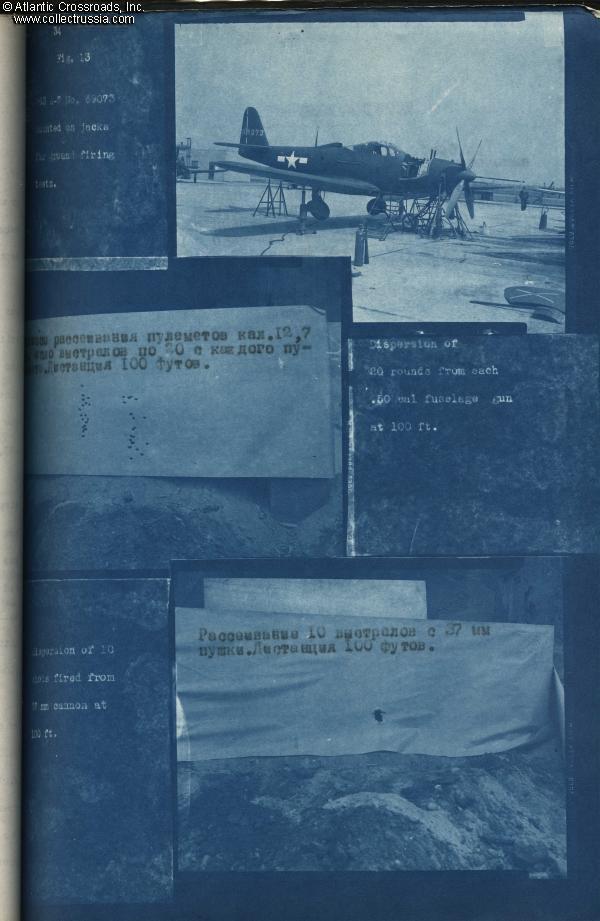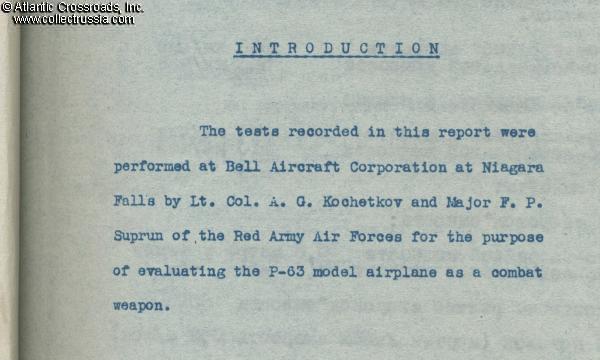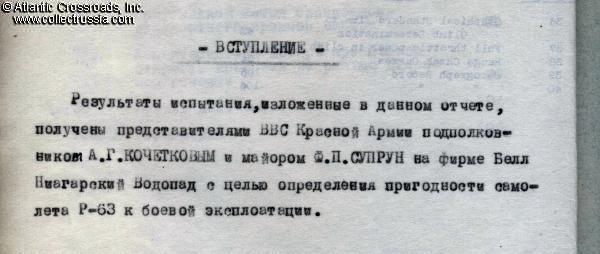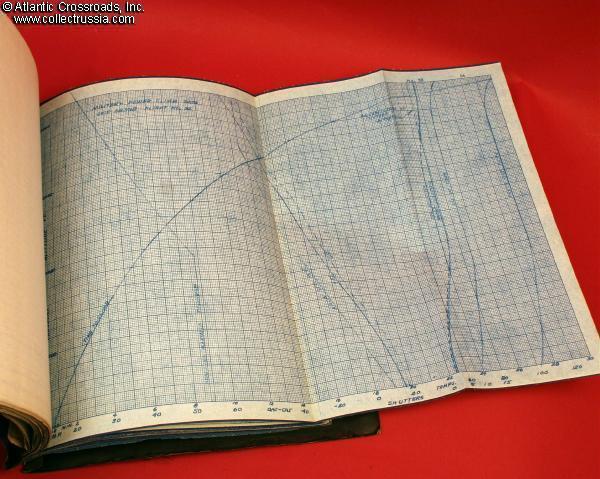
Official 1944 Bell Aircraft Corporation Technical Data report on the P-63 Kingcobra fighter provided to the Research Institute of the Air Force of the Red Army.
112 page report containing the results of twenty seven test flights of the P-63 Kingcobra conducted in New York between May and June of 1944. The report and all of the technical data is in English. The Research Institute of the Air Force of the Red Army inserted typewritten Russian language translations on a page by page basis and placed a certification cover sheet at the front (dated October of 1944) where both Soviet test pilot engineers signed their names. With the exception of the page from the Research Institute, the entire report was printed by a combination of diazo "whi
112 page report containing the results of twenty seven test flights of the P-63 Kingcobra conducted in New York between May and June of 1944. The report and all of the technical data is in English. The Research Institute of the Air Force of the Red Army inserted typewritten Russian language translations on a page by page basis and placed a certification cover sheet at the front (dated October of 1944) where both Soviet test pilot engineers signed their names. With the exception of the page from the Research Institute, the entire report was printed by a combination of diazo "whiteprint" and traditional "blueprint" processes. The text is supplemented by many charts and a few photographs. There are also two photographs that show the test pilots and Bell aircraft personnel at the Newark, New Jersey airport.
The report is in very good to excellent condition. The impressed protective Bell Aircraft Corp. cover is dog eared and its original label shows various cross outs, but the contents are all present and completely readable. The two glossy photographs have minor crumpling along the edges; the original picture having undoubtedly been taken with a 1940s press camera, the image is very crisp.
"The tests recorded in this report were performed at Bell Aircraft Corporation at Niagara Falls by Lt. Col. A. G. Kochetkov and Major F. P. Suprun of the Red Army Air Force for the purpose of evaluating the P-63 model airplane as a combat weapon." It is of interest to note that Lt. Col. Kochetkov actually crashed one of the P-63 planes in the test. The conditions of the crash and the testing led to the apparent determination that if pilots of the aircraft found themselves in a similar spin that their only choice was to immediately bail out!
Accompanying the report are two large glossy black and white photographs, one of which has the back stamp of the official Newark, New Jersey airport photographer. Both pictures are virtually identical and show seven men in civilian garb boarding an Eastern Air Lines aircraft. There is a male airline steward standing to the side. Interestingly, one man's face is partially obliterated in both photos. There is no caption attached saying who is who in the photo, but knowing the Soviet penchant for rewriting history, it may be reasonable to assume that the crossed out individual was a third Soviet who was involved in testing the P-63. Since Lt. Col. A. G. Kochetkov went on after the war to receive the 'Honored Test Pilot of the USSR' badge and became a Hero of the Soviet Union, it is reasonable to assume that he is not the crossed out man! Because Major Suprun went on after the war to become a professor at an aviation school in Kiev, the question is: who is the "non-person" in the pictures? we may never know... It is hard today to imagine a time when an airport would have kept a professional photographer on retainer to record the comings and goings of important visitors.
Lt. Col. A. G. Kochetkov, to whom this folder probably belonged, was born in St. Petersburg in 1908. He joined the Red Army in 1927 and graduated from three different military courses in fairly rapid succession. During WW 2, he flew in various fighter units both in the Moscow area and in the Leningrad region. In 1944, he traveled to the USA to conduct test flights of the P-63 Kingcobra and to provide firsthand input to the Bell Corporation about how Soviet pilots wanted that aircraft to perform.
During the Korean War, he served in a support / liaison capacity with the Soviet pilots who were based in China. The final six years of his active military career (1953-1959), he tested fighter-interceptors. In 1958, he became a Hero of the Soviet Union in recognition of his long years of service as a test pilot. (Among his other awards were: two Orders of Lenin (1952, 1958), three Orders of the Red Banner (2 in 1947, 1 in 1948), two Orders of the Patriotic War, 1st Class (1945, 1985), one Order of the Patriotic War, 2nd Class (1944), two Orders of the Red Star (1942,1944), plus various medals.
Unless you are a student of WW 2 aviation, you may not know that when the Bell Aircraft Corporation found that the United States government decided that it liked Mustangs much better than than their 'Cobras, the folks at Bell scrambled for an alternate customer to replace the USAAF.
Bell finally decided to market the airplane to the Soviet Union. And, under the terms of Lend Lease financing, the Soviets soon became the biggest consumer of Kingcobras (2,456 of them during the war). Interestingly, the planes, once they had been ferried to the USSR, were technically supposed to have been dedicated to use against the Japanese. Anecdotal evidence, however, particularly from former Luftwaffe pilots, indicates that some of the Kingcobras found their way into service against the Germans.
It would seem that the Lend Lease Kingcobra did well in Soviet service with most being used as tankbusters. Some historians believe that its success record may have been downplayed by Soviet writers who preferred to focus on the achievements of Soviet designed and built aircraft after the war was over.
This folder is evidence of the war-time cooperation that existed between the USA and the USSR. It is interesting to think that passing along a similar technical report to the Soviets only a year later could have resulted in a very long jail sentence for the US aircraft executive involved!
A fascinating document and a rare piece of aviation history.
$2,900.00 Add to cart

